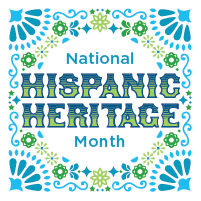5 tips to strengthen client relationships with cultural sensitivity
Financial professionals play an integral role in assisting individuals and families with managing their finances and achieving long-term financial wellbeing. As the United States population continues to become more culturally diverse, it’s important for financial professionals to become more culturally aware and tailor their services to meet the needs and preferences of their diverse client base. Understanding the cultural contexts in which clients operate can help to enhance your client relationships, improve financial outcomes, and grow your business.
Here are five strategies financial professionals can implement to become more culturally sensitive when working with multicultural clients:
1. Recognize and appreciate cultural diversity
Cultural diversity encompasses a wide range of factors, including ethnicity, race, socioeconomic status, education levels, religion and traditions. Each client brings a unique set of stories and experiences that shape their attitudes toward money and financial decision-making. Financial professionals should acknowledge that cultural contexts vary and avoid imposing their own cultural biases when speaking to their clients.1
"Cultural diversity encompasses a wide range of factors, including ethnicity, race, socioeconomic status, education levels, religion and traditions."Furthermore, attitudes toward money, the role of family in financial decision-making, community relationships, and traditions related to money differ across cultures. “It’s important for financial professionals to cultivate relationships with their multicultural clients. For example, many Hispanics may come with a lot of baggage when they come to this country. There are some cultural misconceptions that they bring from their country of origin. One of them is a distrust in financial institutions. Keep this in mind when trying to understand their perspective,” says Javier Pena, Multicultural Markets Manager at Global Atlantic. Financial professionals should also be aware that many multicultural communities, such as the Hispanic and Asian communities, are extremely family-oriented and make most important decisions as a collective.
“When we talk about family, it’s not just immediate family, it’s the immediate family plus grandparents, cousins, aunts, uncles, etc. We are all interconnected and financial decisions are made in a family environment. Additionally, the majority of Hispanics in the U.S. are helping or sustaining two households: one is their family in the U.S. and the other is their family in their country of origin,” he adds.
Religious beliefs may also influence an individual’s financial decisions, so it’s important for financial professionals to understand these cultural nuances and adapt their approach accordingly.1
2. Open lines of communication
Effective communication is key to building trust and understanding with clients. Encouraging your clients to share personal stories and financial values creates an opportunity for financial professionals to tailor their services and educational resources to the specific needs of each client.
“Communication styles are different between Asian and American cultures. I grew up in a very traditional family, so interrupting is a big no-no in our culture. We let people finish what they’re saying before speaking, but it’s not because we’re shy or disengaged – we’re just trying to listen and be respectful,” says Pei Yin Ng (Joey), Multicultural Markets Manager at Global Atlantic, who researches how financial professionals may more effectively work with their multicultural clients.
Improved communication not only enhances financial literacy but can also strengthen intergenerational wealth transfer within families.1 Often, there is a lack of communication within families regarding financial matters. Financial professionals can help bridge this gap by facilitating open discussions about wealth-building efforts and encouraging dialogue between spouses, parents, grandparents and children. By fostering open lines of communication, financial professionals can expand their clients’ financial education and empower them to make more informed decisions.1
If there’s a language barrier, financial professionals can include a partner or assistant in meetings who can help bridge the communication gap. Including bilingual financial education materials for multicultural clients can also help the information resonate more deeply with clients whose first language isn’t English. Furthermore, many companies offer interpreters and translation services. Taking advantage of these services can help financial professionals communicate better with their multicultural clients. In addition to these services, it’s integral to avoid industry jargon and other financial language when speaking to clients.
“Simplifying the language and avoiding jargon is important. If you use jargon, your client can get lost and will have a harder time trying to understand what you’re saying. Instead of trying to sell products, try educating your clients first,” says Pena.
3. Build cultural knowledge
In order to effectively integrate cultural sensitivity into their practice, financial professionals should invest in building cultural knowledge about the client populations they serve. This includes developing an understanding of specific cultures, including their education levels, socioeconomic status, traditions and family values. Additionally, financial professionals should familiarize themselves with available resources and networks that cater to diverse cultural groups.1
Researching and learning about clients’ cultures, experiences and financial challenges enables financial professionals to provide more customized and effective services. By staying in tune with the cultures they work with, financial professionals can tailor client interactions and address clients’ unique financial needs.1
According to Pena, “Financial professionals can start by engaging in cross-cultural experiences. They should also be aware about big cultural celebrations, like Hispanic Heritage Month and Day of the Dead – which are both well recognized in the Hispanic community.”
4. Embrace cultural competency
Cultural competency is essential for financial professionals seeking to bridge the money and culture gap. Financial professionals should avoid imposing their own personal judgements or cultural biases on clients and refrain from relying solely on conventional wisdom that may reflect a western approach to financial planning.2
“A common misconception financial professionals have is about Hispanics’ financial literacy levels. They often assume that they have limited financial knowledge, but financial literacy varies among Hispanics, so it’s important to provide education and support when needed.” Hispanics are often stereotyped as “blue collar” and lower income, but the purchasing power of the 62.1 million Hispanics in the United States is currently $1.7 trillion dollars.
By developing financial empathy, actively listening to clients, conducting research, and being aware of different fee structures, financial professionals can better serve clients from diverse backgrounds. Financial professionals should remain open to learning from their mistakes, as cultural competency is an ongoing process that requires continuous education and improvement.2
5. Establishing rapport and respect
Building rapport and respect with clients from diverse cultural backgrounds is essential for effective financial planning. Acknowledging and understanding clients’ cultural values and priorities fosters trust and strengthens the financial professional-client relationship.3
"Learn about your client’s background, be curious, not ignorant, and ask questions to get to know them."
To build trust with clients, it’s important for financial professionals to build some cultural awareness around the different cultures they serve. “When somebody comes into your office, don’t assume they’re from a specific country because they look a certain way or have an accent. A lot of people assume I’m from Mexico, but I’m from Colombia and there are a lot of cultural differences between us,” says Pena.
“Learn about your client’s background, be curious, not ignorant, and ask questions to get to know them,” adds Joey.
Financial professionals should seek to establish connections beyond their professional roles by taking a genuine interest in clients’ lives outside of business. They can help create meaningful relationships by sharing meals, utilizing the F.O.R.D. method (friends, occupation, recreation, and dreams), and engaging in conversations about clients’ changing needs with empathy.3
Putting it all together
Cultural sensitivity is paramount for financial professionals to effectively serve their diverse client base. By integrating cultural considerations into financial planning, financial professionals can improve client outcomes, strengthen long-term relationships, and expand their book of business. Through open communication, continuous learning, and commitment to cultural competency, financial professionals can foster an environment of trust and respect, leading to more productive financial planning for clients and their families for generations to come.
Share
Related resources
More on Multicultural Markets
Your Thriving
Practice
A destination to empower financial professionals to build, manage, and grow their practice
Get started with Global Atlantic
Take the next step with a company that can help elevate your business.
Need help?
Find all the contact information to submit and service your business.












